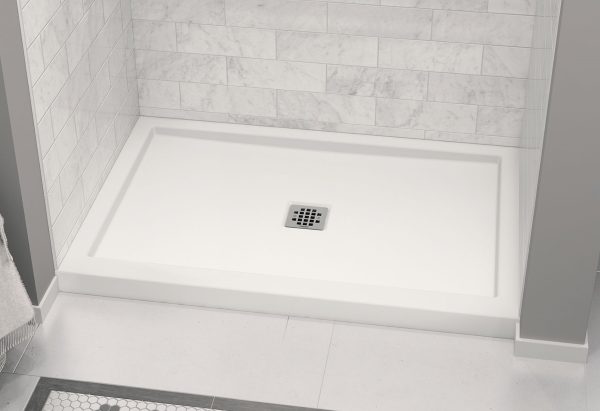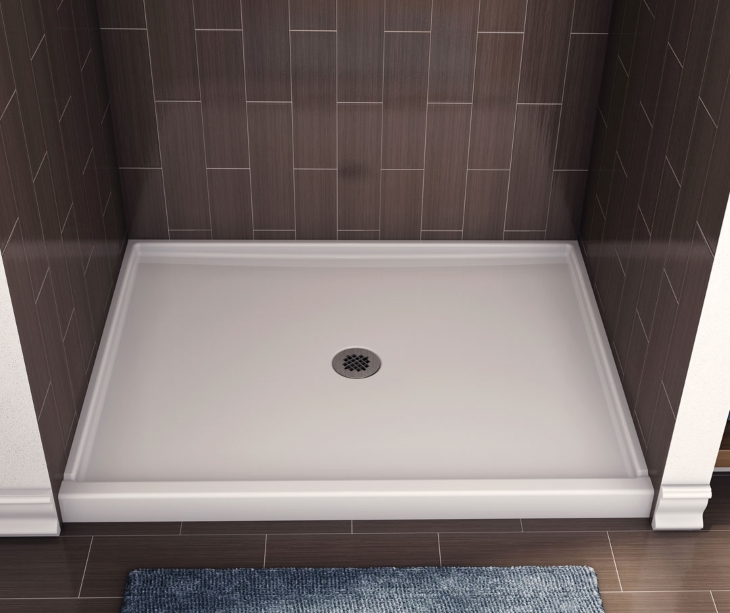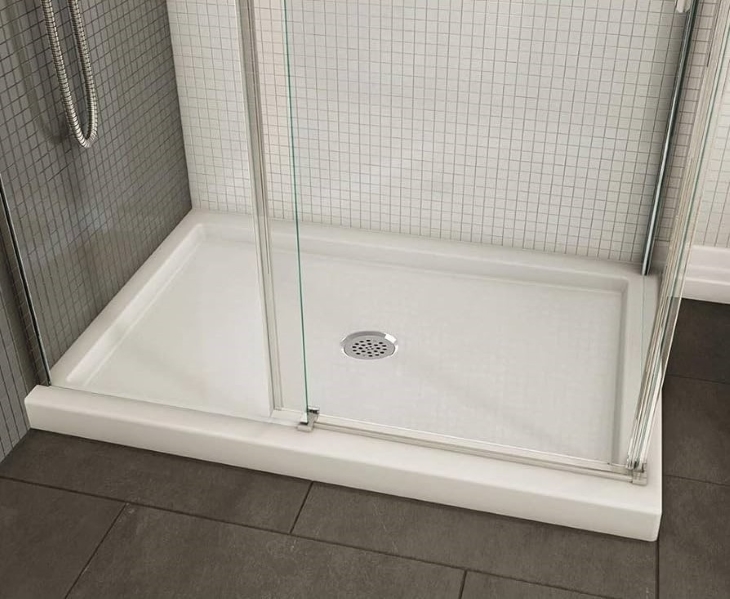02
Jan

Nothing beats a good shower after a long day at work. When it comes to remodelling your stand-alone shower, one of the most crucial decisions you’ll make is the type of base or tray you will get. Even though it is often pre-made and ready to install on the subfloor, meaning you do not need to put in a sloped mortar bed and tiles, there are some additional considerations you should take into account when purchasing.

Elevate your showering experience in the modern bathroom with an aesthetically pleasing and practical shower base designed with durability in mind. Bases are nowadays available in a wide range of shapes, and sizes. What’s more, they’re made of different materials. So, if you’re replacing your outdated bathtub with a modern shower, the following guidelines might give you a hand in making the right selection.
Shower trays come in a variety of sizes. Standard prefabricated ones range in size from 32 square inches to 42 inches wide by 60 inches long. They vary in depth from 1 to 6 inches.
The neo-angle shower, for instance, is distinct in that it resembles a corner shower with the front corner removed. The front of its enclosure has 135-degree angles where the glass meets the wall, and the back corners have 90-degree angles. This style is frequently used in small bathrooms to save space. The cross-dimensional measurement of the base ranges from 36 to 60 inches.
The small square design is another alternative for bathrooms with limited space. For square types, the smallest shower tray is 30 inches. Another factor to consider when selecting your base size is the location of your shower drain. An offset drain, a centre drain, or an on-edge drain are all possibilities.
When on the hunt for the ideal shower base, you can opt for a curbless or walk-in base without a barrier and a typical base with a lip to keep water in. Many people believe that the curbless design is more aesthetically pleasing since it integrates into the bathroom floor. It also makes entry to the shower easier for persons who use a wheelchair or have mobility issues.
You can also alter the shower to fulfil disabilities criteria by installing wall-mounted grab bars and a shower seat. However, this type of shower allows water to escape, which may raise the risk of someone slipping and falling. Also, with the lack of a shower door, you may experience heat loss due to steam escaping.
Generally, shower trays for sale are made of four basic materials: fibreglass, acrylic, solid surface, and tile. Each type comes with advantages and disadvantages.
Although fibreglass is an affordable option, you won’t need to compromise affordability for style as there are many aesthetically pleasing fibreglass bases plus, they’re lightweight. However, because the colour of fibreglass is in the finish, any scratches will be visible. This also implies that if the finish becomes discoloured, it may be difficult to clean. Regarding durability, shower bases made from fibreglass should normally last eight to ten years.
An acrylic base, on the other hand, is made of acrylic that has been moulded over a fibreglass base. This tray is lightweight and simple to clean. Because the colour runs through the material, scratches will be less obvious than on fibreglass, and minor scratches will be easier to rub out. Acrylic costs more than fibreglass. Use caution while selecting cleaners, as some can permanently damage the surface. With proper care, it should endure for roughly ten years.
The solid-surface alternative is more durable than acrylic or fibreglass ones and is more resistant to cleanser stains. This material option is more expensive than fibreglass and acrylic since it is created from crushed minerals and polymer resins. However, leaks can occur if the base does not include tile flanges. A solid surface base should endure at least ten years.
Tile options are handcrafted or manufactured from a prefabricated base. Slip-resistant tiles should be utilised for this purpose. Many people prefer this type of shower floor because it allows you to have more influence over the overall design. The materials needed to achieve this style can also be inexpensive. However, keeping tile grout clean can be difficult, and you’ll need to reseal the tile frequently. It should survive for more than 15 years if properly maintained.

The material you choose will influence the range of hues available to you. Although each one allows for some personalisation. A terrific way to achieve this is to match the base to the wall tile or colour. It doesn’t have to be the same colour, but it’s preferable to work with shades of the same hue. Mixing warm and cool colours should be avoided.
Shades of bronze, biscuit, or almond are wonderful choices for a warm bathroom, while grey, silver, and nickel are good choices for a chilly bathroom where corner cubicle showers mostly do the talking. White is the most popular option as it is inherently attractive and will suit the majority of bathrooms. Choosing a white base also makes it easy to repaint the area because it does not limit your selections. Black is another option here, but it works better in more modern-looking chromatic bathrooms.